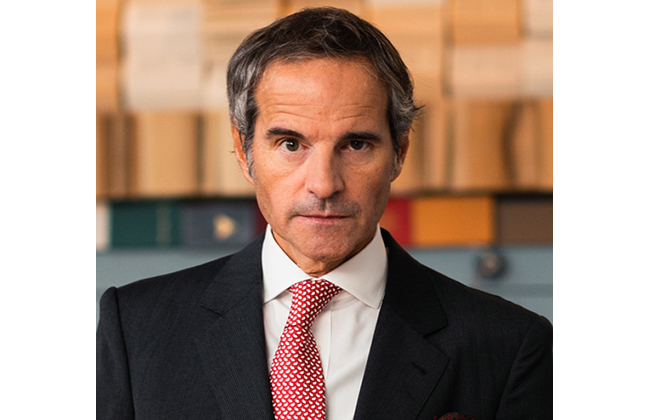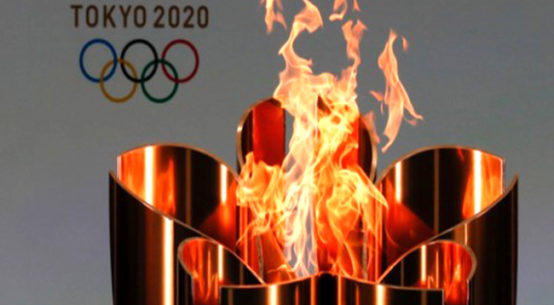
The head of Ukraine’s atomic energy operator accused Russia on Thursday of trying to “steal” Europe’s largest nuclear plant by cutting it off from the Ukrainian electricity grid and leaving it on the brink of a radiation disaster.
The Zaporizhzhia Nuclear Power Plant has been without an outside source of electricity since Monday and receives power for its own safety systems from the only one of its six reactors that remains operational, Enerhoatom chief Petro Kotin told The Associated Press.
“We are trying to keep this unit running as much as possible, but eventually it will have to be shut down and then the station will switch to diesel generators,” he said, adding that such generators are “the station’s last defense before a radiation accident.”
Ukraine and Russia have traded blame for shelling that has damaged parts of the plant as well as the transmission lines that connect it to Ukraine’s electricity network and provide power for the crucial cooling systems that are needed to prevent a meltdown.
The head of the U.N.’s International Atomic Energy Agency, Rafael Grossi, warned the U.N. Security Council this week that “something very, very catastrophic could take place” at the plant and urged Russia and Ukraine to establish a “nuclear safety and security protection zone” around it.
Kotin said the Russians “have a crazy idea to switch the ZNPP to the Russian power system; in fact they are trying to steal the Zaporizhzhia Nuclear Power Plant of Ukraine and steal all the electricity it produces.”
He said the Russians gave the plant management a 10-page plan about three or four weeks ago to connect the plant to the electricity grid in Crimea, which Russia seized from Ukraine in 2014.
On the same day, the Russians started shelling the power lines that connect the plant to the Ukrainian grid, and on Monday, the last line was cut, Kotin said.
This left the plant in “island mode,” meaning it receives power from its only operational reactor, a highly unusual and unstable way of operating a nuclear plant that he said shouldn’t last for more than two hours but has now been in effect for more than three days.
“At any moment, the unit can be stopped completely, and after that, the only power source for the entire nuclear plant will be a diesel generator,” he said. While there are 20 generators on site, “if one of these diesel generators fails, the consequences can be very deplorable and bad for the radiation danger of the ZNPP.”
Kotin said the plant has enough diesel fuel for 10 days. After that, about 200 tons of diesel fuel would need to be brought in daily for the generators, which he said was “impossible” while the plant was occupied by Russian forces.
He said connecting the plant to the Russian grid also was practically impossible given the hostilities in the area.
“There is no other solution than the de-occupation of the ZNPP, the transfer of the plant to the control of the Ukrainian side or international security organizations,” Kotin told AP.
The ZNPP was seized by Russian forces early in the war but is still run by Ukrainian engineers, who Kotin said are working under heavy psychological pressures.
“I can say that most of the people who work there are pro-Ukrainian. Anyone who openly expressed this pro-Ukrainian position was grabbed, abused, beaten,” he said.
Meanwhile, fighting continued near the plant as the towns of Nikopol and Marhanets, which face the plant across the Dnieper River, came under Russian shelling overnight that left apartment buildings, a school, some industrial facilities and power lines damaged, Dnipropetrovsk province Gov. Valentyn Reznichenko said.
“The nuclear threat isn’t abating because of Russia’s mad actions and we need to consider all possible scenarios, including the worst one,” Reznichenko said in televised remarks.
Ukrainian Deputy Prime Minister Iryna Vereshchuk urged residents of Russian-occupied areas near the power plant to evacuate, adding that Ukrainian authorities have urged the Russians to set up humanitarian corridors to evacuate residents but received no response.
In the northeastern Kharkiv region, Ukrainian forces retook portions of Russian-held territory there as a Ukrainian counteroffensive in the south drained some of Moscow’s resources in the area, according to a report released Wednesday.
Ukrainian forces in the Kharkiv region are “likely exploiting Russian force reallocation” to areas near the occupied city of Kherson in the south “to conduct an opportunistic yet highly effective counteroffensive” in the province, the Washington-based think tank Institute for the Study of War said.
Ukrainian forces likely used “tactical surprise” to advance at least 12 miles (20 kilometers) into Russian-held territory in the Kharkiv region on Wednesday, recapturing approximately 155 square miles (400 square kilometers), the report said.
Brig. Gen. Oleksiy Gromov, the head of the main operational department of the Ukrainian military’s General Staff, said at a briefing Thursday that Ukrainian troops had reclaimed control of over 20 settlements in the Kharkiv region and forged up to 30 miles (50 kilometers) deep into Russian-occupied areas this week.
Ukrainian President Volodymyr Zelenskyy on Thursday said Balakliya, a city of 25,000 and an important railroad junction, was one of the communities Ukrainian forces have recaptured.
“Everything is in its place. The flag of Ukraine in a free Ukrainian city under a free Ukrainian sky!,” he said on the Telegram messaging app.
The gains came as Ukraine continued to mount a counteroffensive in the southern Kherson region.


